2. Butterbur Scape
3. Pheasant's Eye Adonis
4. Lamprey
5. Anemone
6. Anemone (Blue)
7. Cowslip
8. Dandelion
9. White Dandelion
10. Twin Anemone
11. Manila Clam
12. Dogtooth Violet
13. Anise Magnolia
14. Whipped Cobra Lily
15. Cacalia
16. Wild Vegetable Hunting
17. Parasenecio
18. Primrose
19. Private Anemone
20. Trillium
21. Basket Clam
22. Japanese Chloranthus
23. Barrenwort
24. Wasabi
25. Shredded Umbrella
26. Wood Poppy
27. Ywllow Wild Orchid
28. White Wild Orchid
29. Dwarf Iris
30. Ghost Plant
31. Columbine
32. Water Lily
33. Common Day Lily
34. Spotted Bellflower
35. Ayu-Fish
36. Bog Moss & Sundrew
37. Cicada
38. Japanese Woodland Catchfly
39. Swallowtail (Tail-less)
40. Summer Spider Lily
41. Ryukyu Ayu
42. Jiaogulan
43. Day Lily
44. Watershield
45. Watersprite
46. Arrowhead
47. Spider Lily
48. Jewelweed
49. Windflower
50. Akebia
51. Bitterling
52. Medaka
53. Aroma Citron
54. Chinese Bamboo Partridge
Wild Ginger
January 10, Zushi, Kanagawa
Fascinating marbled pattern on the leave. Grows by a footpath on a hill.
Sometimes the pattern spreads along leaf veins. I have rarely seen this type of pattern on this group of plants, but here it is somewhat more frequent than other habitats.
Butterbur Scape
January 26, Shiogama
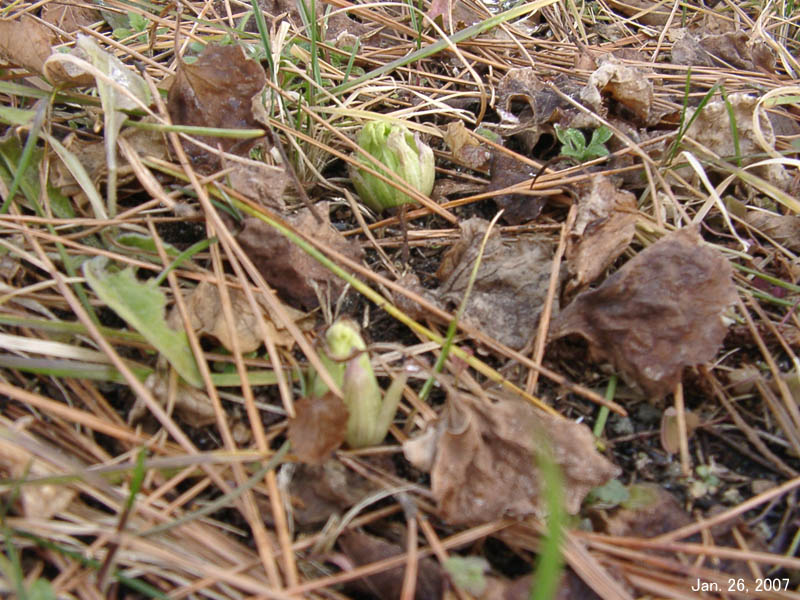
It was a warm winter. It came out at the entrance of the Institute as early as January.
January 20, Rifu, Miyagi
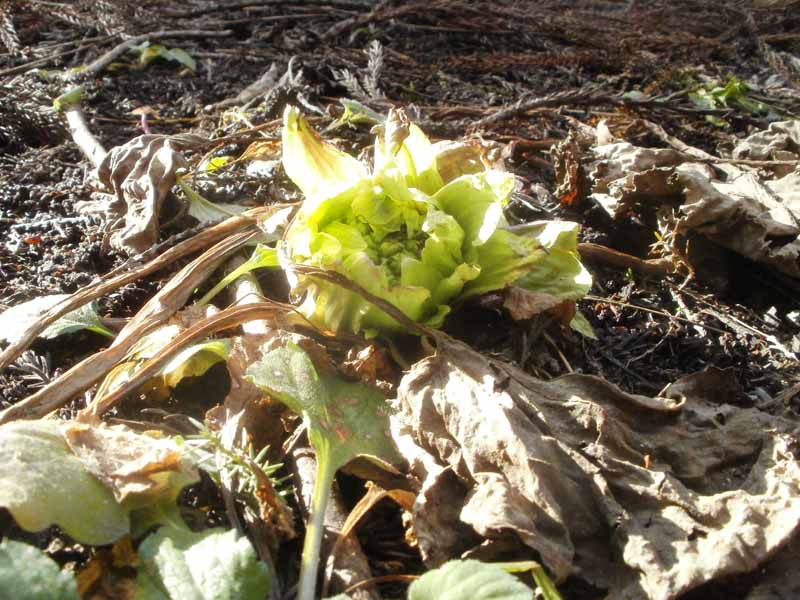
In a warmer winter, it came out even earlier even in forest on a hill.
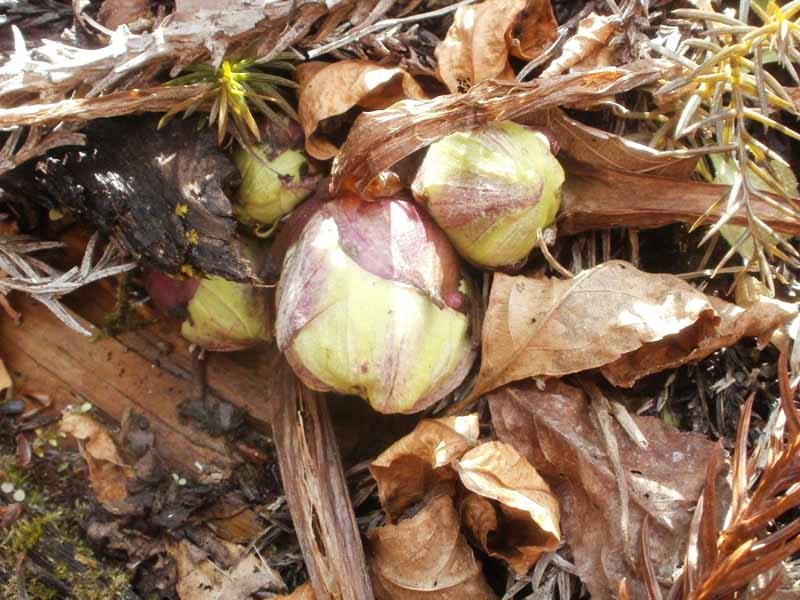
Pheasant's Eye Adonis
April 17, Hachinohe, Aomori
The earliest flower in spring. Common, but mostly not beautiful.
Lethenteron reissneri
April 1, Rifu, Miyagi
Spawining activity in a small stream near the town.
Bloom as early as Adonis. Commonly white.
May 5, Taiwa, Miyagi
Sometimes blueish, but brightly blue is uncommon.
Grows on a wet ground.
Dandelion
March 20, Kanazawa, Yokohama
It is a native Japanese species. Distinguishable by unfolded sepals from the introduced European species.
White Dandelion
April 30, Higashimatsusima, Miyagi
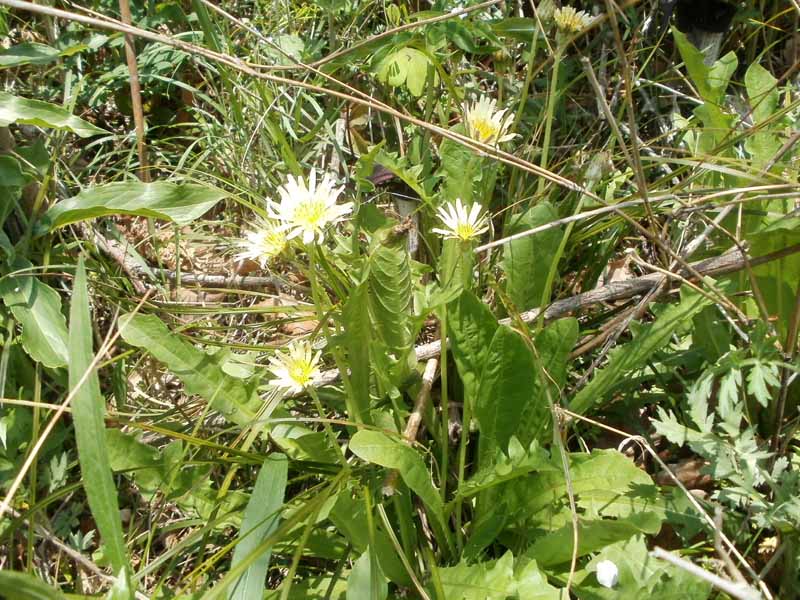
Uncommon in Tohoku Region. A native Japanese species.
Twin Anemone
March 20, Kanazawa, Yokohama
A relatively big colony though it grows in the city. Leaves and floweres are edible, but they do not have a particular strong taste.
April 22, Matsushima, Miyagi
An extremely big colony. Sank under water next year by damming.
Manila Clam
March 5, March 20, Kanazawa, Yokohama
Collected in the Yokohama City Umi-no-koen. Popular clam in Japan.
Dogtooth Violet
April 9, April 10, Rifu, Miyagi
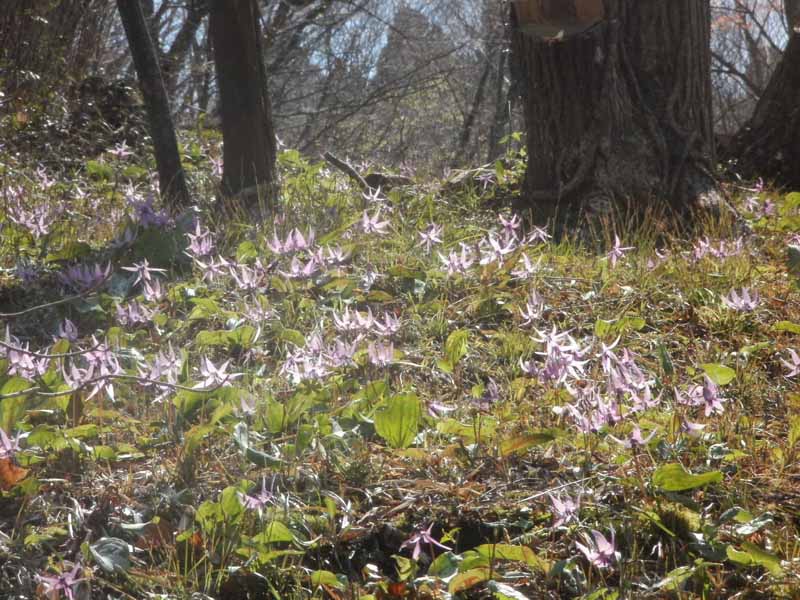
Dense grow-out in Rifu.
Popular and common among spring ephemeral flowers in Japan. Anywhere in forest and wood around hills and mountains in Tohoku District. So abundant, but frequently uprooted stolen away on roadside or places easily found out.
Anise Magnolia
March 21, Kanazawa, Yokohama
Typical and symbolic spring flower tree in Japan.
Whipped Cobra Lily
April 11, Yokosuka, Kanagawa
An interesting shape of flower with a whip-like protrusion on spadix. Very common in spite of near the city.
Cacalia
April 22, Matsushima, Miyagi
One of the popular wild spring vegetable. Hairless leaf surface gives smooth texture, but I do not like very much its flavor.
May 5, Taiwa, Miyagi
Wild Vegetable Hunting
April 24, Rifu, Miyagi
Fatsia, Bracken, Ostrich Fern, Tall Fatsia, Day Lily, Horsetail.
Thornless Fatsia.
Parasenecio
May 4, Aoba, Sendai, May 5, 14, Taiwa, Miyagi

Popular wild spring vegetable.

Grow in the Tajima-ga-hara protected area.
Private Anemone
May 1, Marumori, Miyagi
Flower and also leaves are bigger than other anemones. Blooms a little later.
Trillium
May 7, Ishinomaki, Miyagi
Uncommon pink flower. May be hybrids between common and white trilliums.
Basket Clam
May 15, Ota, Tokyo
Common in brackich waters. Collected at low tide time.
Japanese Chloranthus
May 4, Aoba, Sendai
Grows on a tree shaded ground. Not conspicuous but impressive shape.
Barrenwort
May 4, Aoba, Sendai
Yellow flowered species among barrenworts. Conspicuous anchor-like flower.
Grows on a shady wet woodbed. The wasabi paste is made from root of this plant, but it is really difficult in the wild to get big roots of commercial size.
Shredded Umbrella
May 4, Aoba, Sendai
Sprouts like just an opening umbrella.
Wood Poppy
May 1, Taiwa, Miyagi
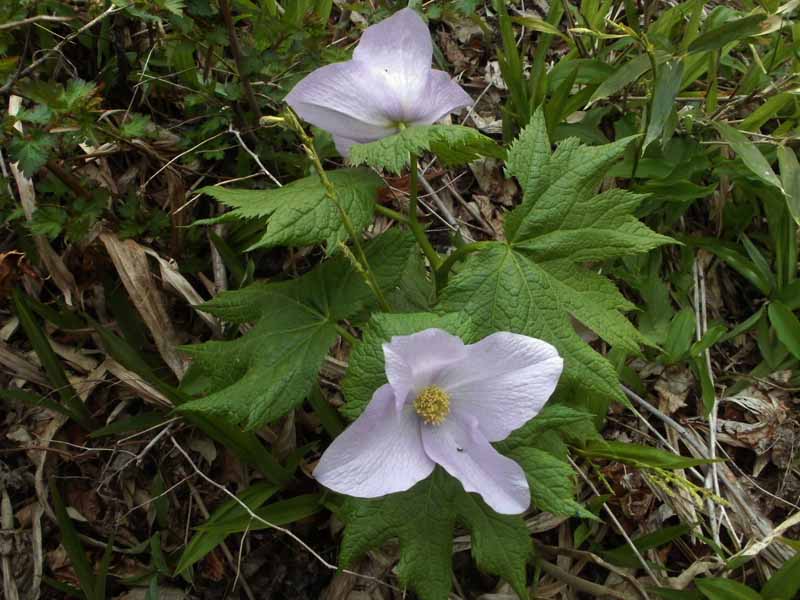
Rather big light purple flower at the top.
Yellow Wild Orchid
May 5, Kanazawa, Yokohama
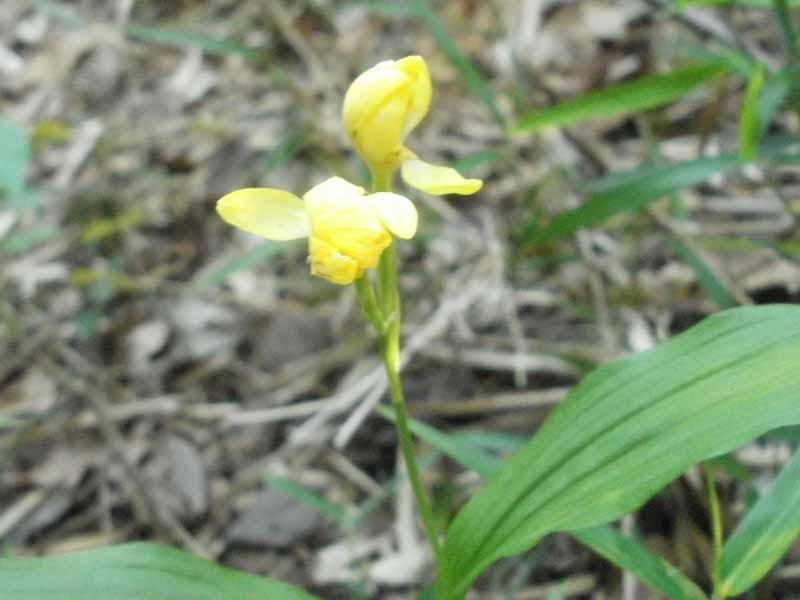
Common among bush in hillside.
White Wild Orchid
May 5, Kanazawa, Yokohama

Smaller than the yellow one.
May 9, Ogawa, Saitama
Larger one. Common among bush in hillside.
Dwarf Iris
May 6, Taihaku, Sendai
May 17, Aoba, Sendai
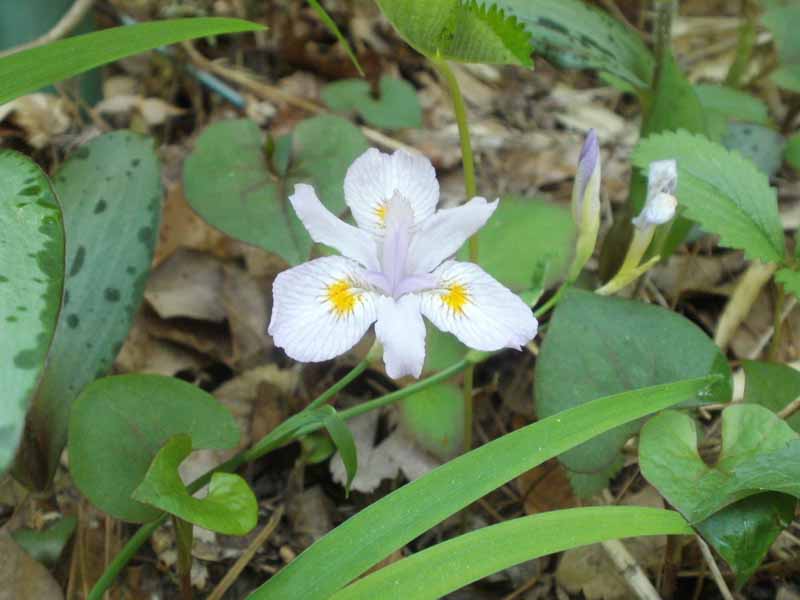
A rare species, but common over there. Pale colored type. Somewhat too early to see flowers. Usually it blooms one week later from the 'golden week'. At a footpath-side under bush in Taihaku.
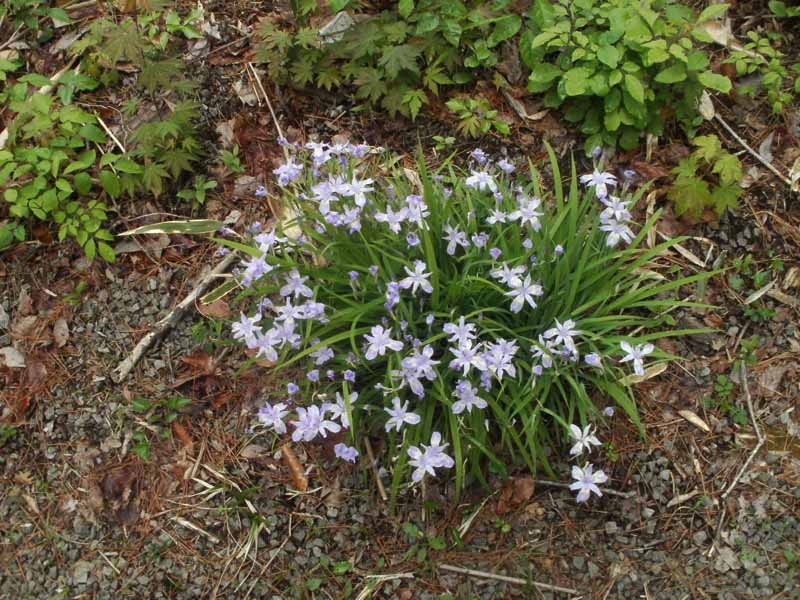
A big bunch in the Aoba Forest Greenery.
Ghost Plant
May 17, Aoba, Sendai
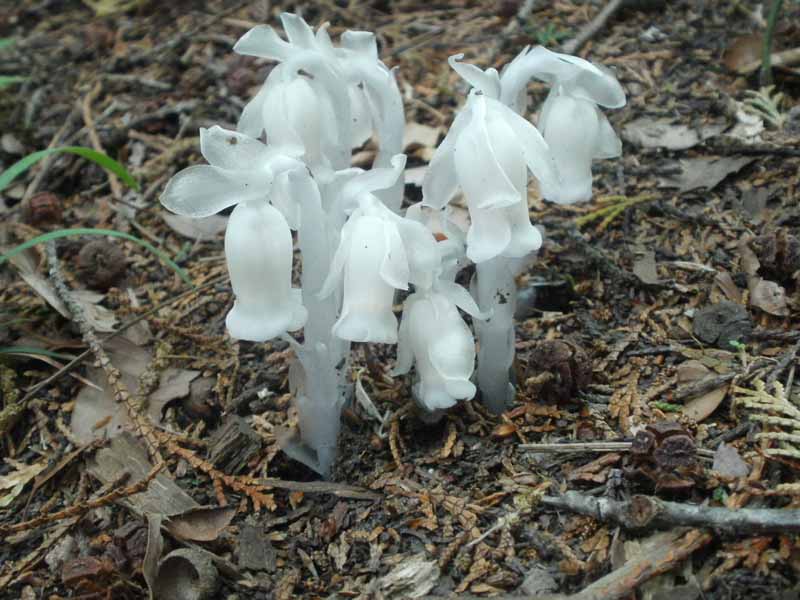
Conspicuous white flower in late spring in Aoba Forest Greenery. Growing under deep and dark forests makes it very notable.
Columbine
May 17, Aoba, Sendai

Garden spilled-outs can frequently be seen in residential area, but this is surely wild at a road-side under bush.
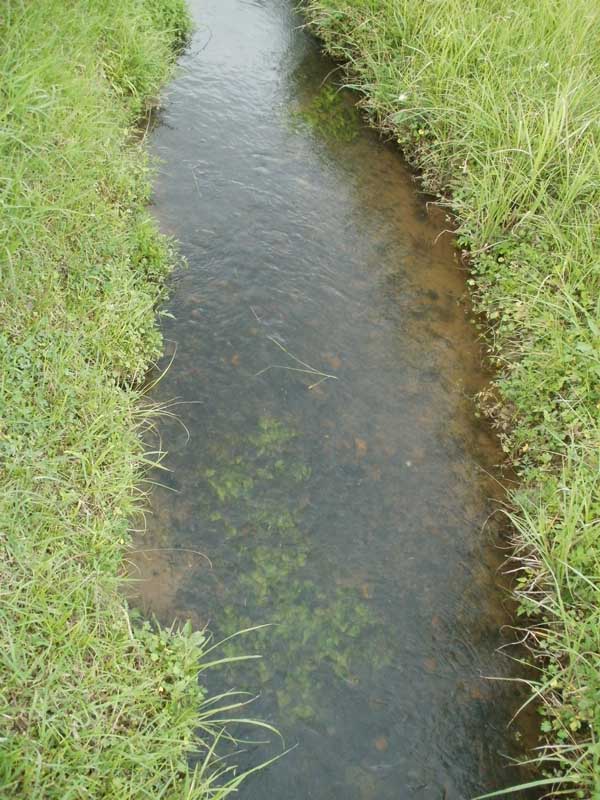
A rare species. Several thickets around, but mostly destroyed. The only remnant thicket photographed.
Common Day Lily
June 9, Rifu, Miyagi
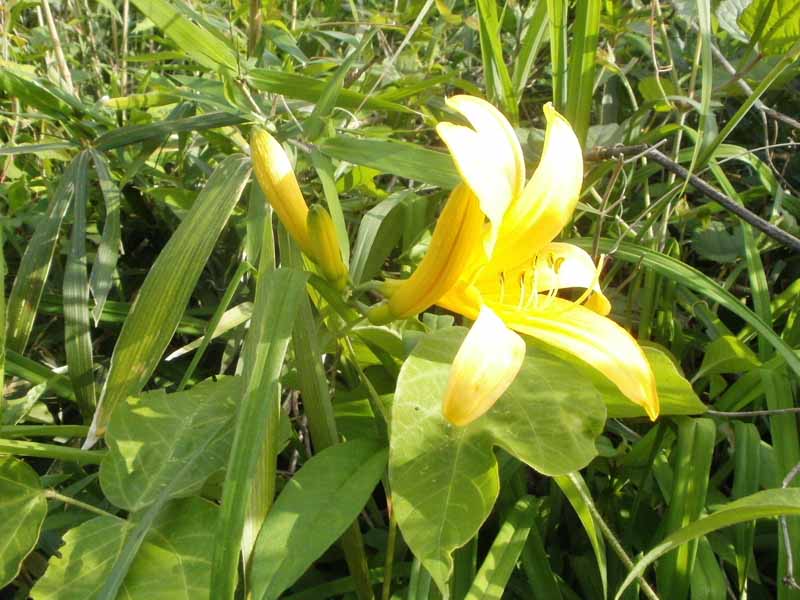
Common in the Tohoku region. Grows on a bank in a residential area, a couple of minutes walk from my house.
Spotted Bellflower
June 17, Kiyokawa, Kanagawa
June 23, Rifu, Miyagi
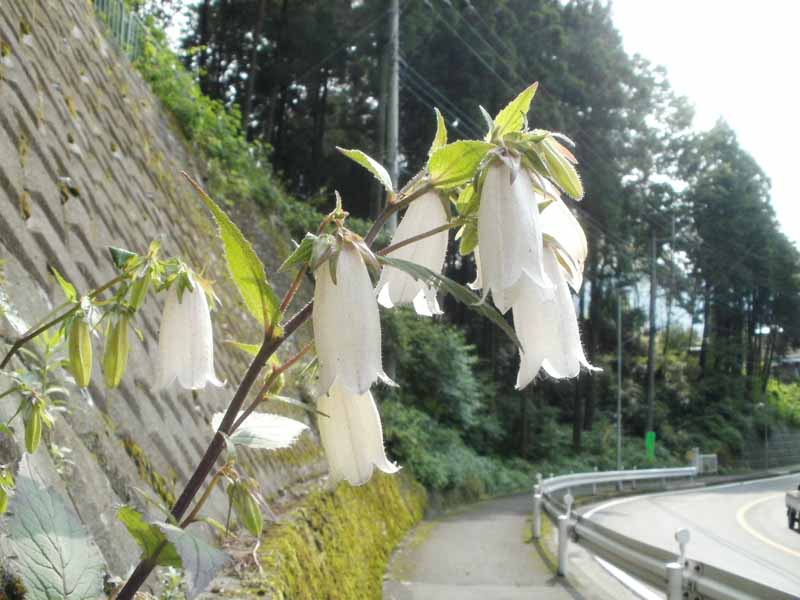
White variety is now common. Grows on a bank at roadside in Kiyokawa.
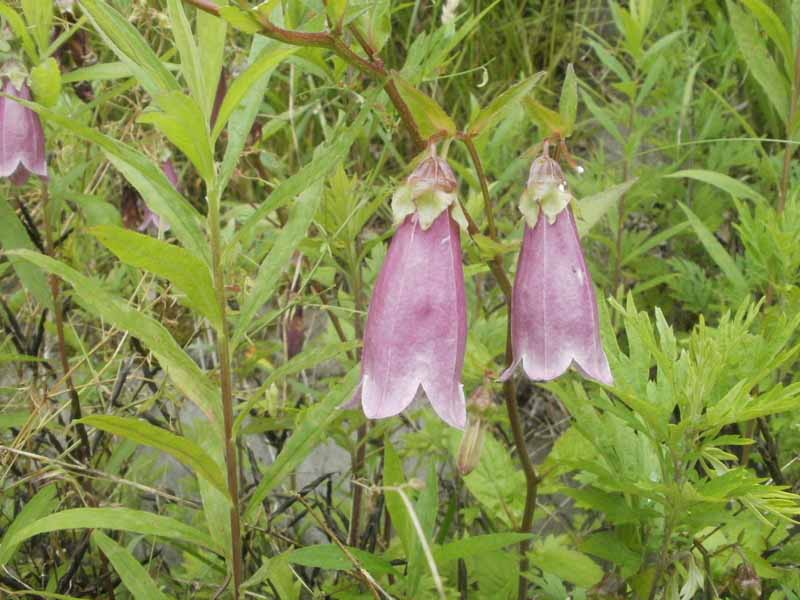
Red variety. Grows at roadside in Rifu.
Ayu-Fish
July 13, Onoda, Kami, Miyagi
Result was few on that day, so I prepared sushi which takes time. The biggest one is about 21cm in total. There is releasing activity of cultured seeds, but that site is far from the releasing point, and I think they are wild migrants.
August 26, Hanamaki, Iwate
From 1990s to early 2000s, the cold water disease outbreak severely damaged ayu populations all over Japan. This catch was from unusual good result at that period. Even the smallest was 21cm. The biggest was 24cm.
July 14, Nakaniida, Kami, Miyagi
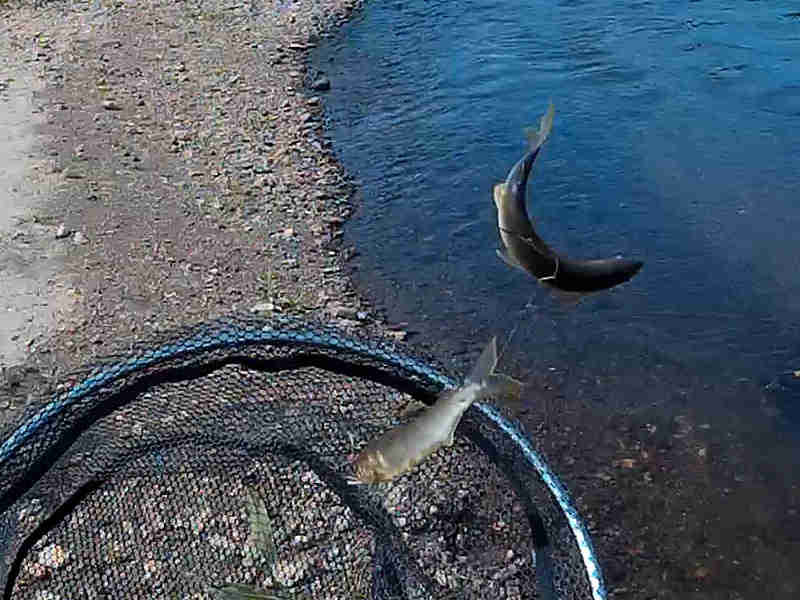
Treble hook is common for ayu fishing, but single hook can angle as well. Because anglers rarely use single hook device, there is no commercial supply of this type, though. Use of lighter single hook makes the decoy ayu to swim better to trigger attacks of wild ayu to be hooked.
Bog Moss & Sundrew
July 25, Shiogama, Miyagi
I collected a small amount of moss to transplant in my garden, then sundrew came together.
Cicada
August 3, Kamaishi, Iwate
I am not sure when this species comes out. Sometimes I saw it in May, and some other times in September. Frequently stays upside down.
Japanese Woodland Catchfly
August 3, Rifu, Miyagi

Flowers in mid-summer. Conspicuous dark orange color. Grows in the Miyagi People's Recreational Woodland.
Swallowtail (Tail-less)
September 15, Toyoma, Tome, Miyagi
It was the first time to see a tail-less swallowtail. Quite uncommon.
Summer Spider Lily
August 3, Rifu, Miyagi
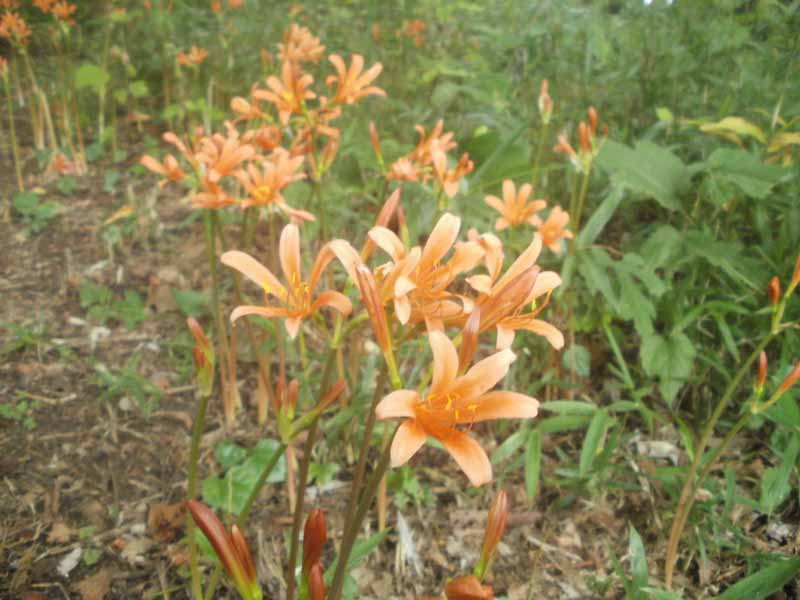
Floweres in mid-summer in the Miyagi People's Recreational Woodland.
Ryukyu Ayu
October 16, Amami, Kagoshima
Dorsal fin is conspicuous that is more yellowish than ayu-fish. As small as 15cm.
Jaogulan
November 3, Kamakura, Kanagawa
Once it has received reputation as herbal medicine in Japan, but its popularity is now declining.
Day Lily
September 14, Yokosuka, Kanagawa

Day lily variation growing on a coastal rocky clif. Flower shoot is edible. Same as jinzhencai of Chinese food.
Watershield
October 18, Sanda, Hyogo
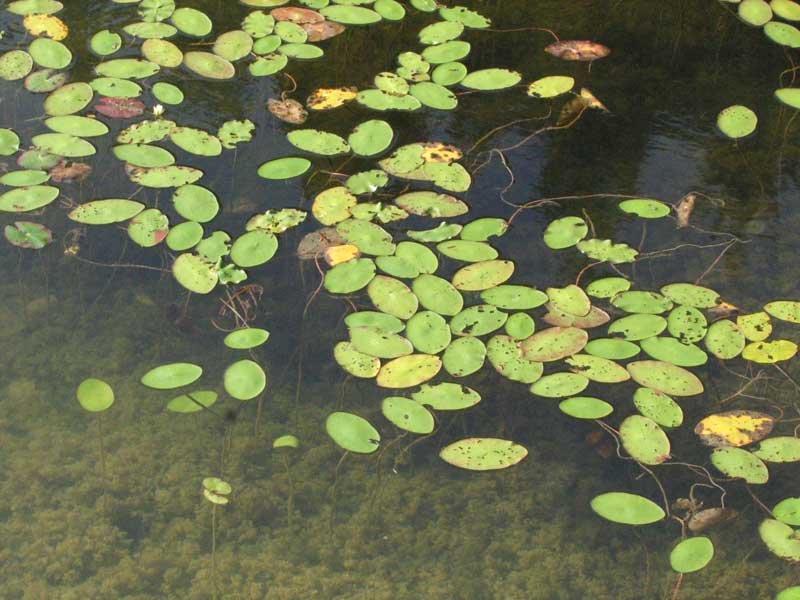
In a small pond in hillside. Shoot is edible. Popular food in Kyoto. The bottom is covered by Chara. A flower of Pigmy Waterlily on the left far side.
Watersprite
September 26, Sakae, Yokohama
![]()
Grows on a rice paddy. Conspecific or close to the watersprite popular to aquarists. It had been extremely rare species until 1970s. It was really emotional to see that water fern in Okayama around 1980. The fern from Okayama was easy to tame to become perennial in aquaria.
Recently I see this water fern from time to time from place to place in warm places. It obviously increased. Use of agricultural chemicals might have been declined.
Here in Yokohama, this fern grows to become visible from around the beginning of September. Both flat vegetative and slender spore liaves appear. At this point where spore leaves develop, it switches to spore production, and becomes unable to domesticate in aquaria. I tried several ways changing temperatures, light conditions, and even applying gibberellin, but it never became perennial. Nothing grew from soil possibly containing the fern spores after it downed. The fern from Kyoto, Shiga and Gifu also did not become perennial in aquaria.
Though it increased recently, this water fern is still very rare near Tokyo. Close to or on this habitat, highway construction is ongoing to threat the water fern.
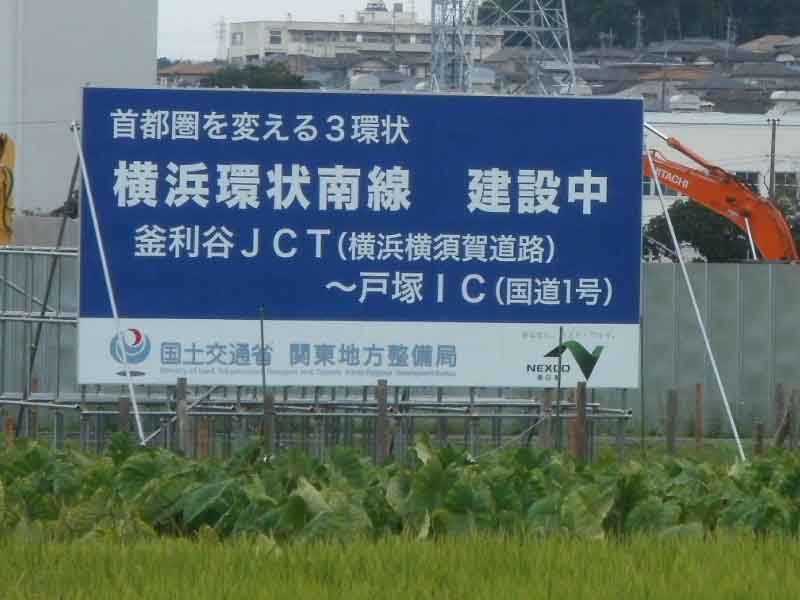
Arrowhead
September 26, Sakae, Yokohama
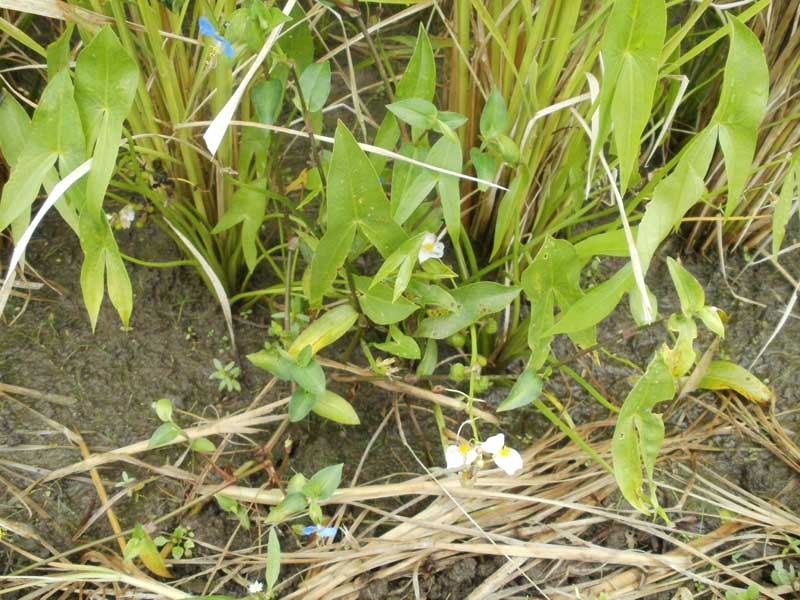
Grow with watersprite above.
Spider Lily
October 1, Yokosuka, Kanagawa
Uncommon white flowers among red. The clock of flowering switch is quite punctual. It blooms just around the Autumnal Equinox. Only one week or less time difference. Moreover, it has no leaves in summer for estivation, so it cannot know seasons from day length change on its leaves. How do they know the time?
Yellow variety. Quite uncommon. It is the first time to see.
Jewelweed
September 23, Taiwa, Miyagi
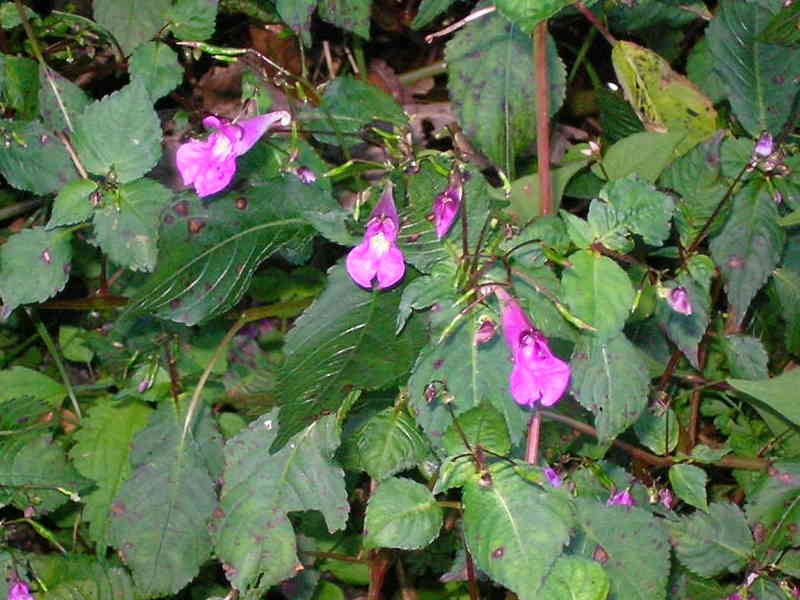
Beautiful pink flower with a rolling tail like a trumpet. Annual plant, though it grows relatively big.
September 23, Matsushima, Miyagi

Another species with yellow flower.
Windflower
October 21, Aoba, Sendai
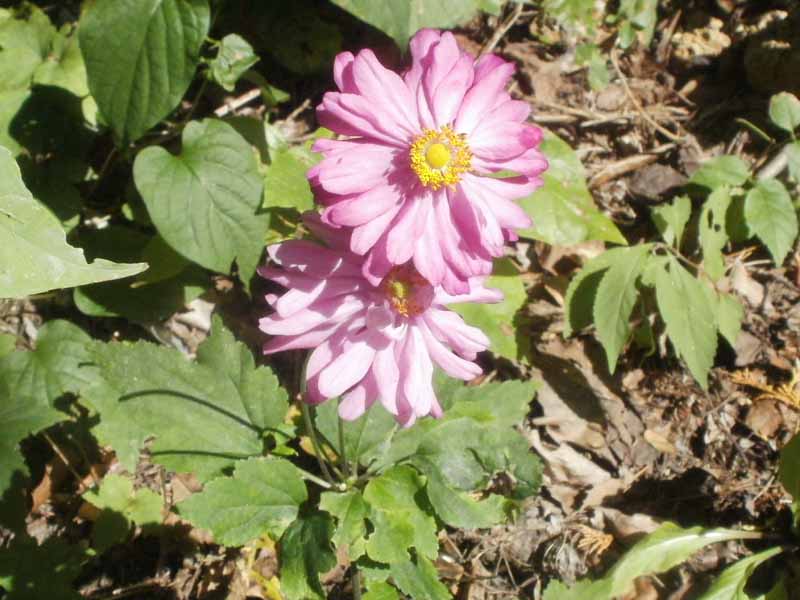
Beautiful pink flower with several sepals. It blooms in autumn.
Akebia
October 7, Naruse, Higashimatsushima, Miyagi
Abundant but beared high above us, and difficult to collect. Sometimes I can reach them where the plant coils around cliffy place so that I can climb. At that time I took this photo, I pulled the vine down to collect, then the next time the harvest reduced by half. I should handle the vine gently to collect for years.
November 7, Naruse, Higashimatsushima, Miyagi
A very good Japanese naive fruit. A white small mashroom is a breaded tooth.
Bitterling
October 31, Kashimadai, Osaki, Miyagi
Endemic and endangered in Japan. Only a few habitats known from Tohoku District where the natural resources are relatively rich. Photo taken at Katsurazawa Pond, Kashimadai, when the town government surveyed the status of topmouth gudgeon, which is also endangered. The bitterlings are few among survey catch, while the topmouth gudgeon were abundant.
Medaka
November 7, Naruse, Higashimatsushima, Miyagi
Abundant in small streams around Matsushima Cove.
Aroma Citron
November 21, Shiogama, Miyagi
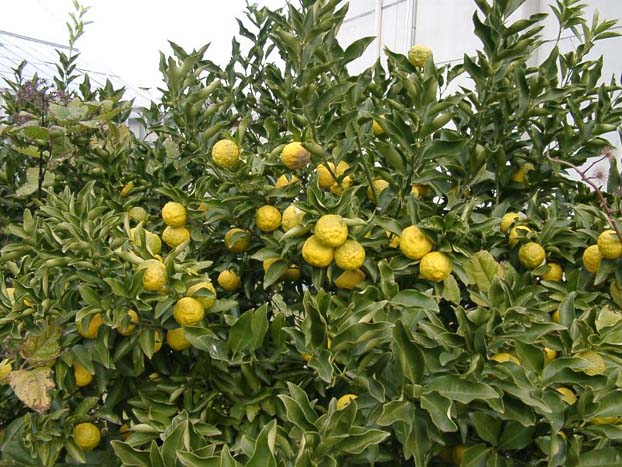
Grow in the institute yard. Someone planted years ago. Small at that time, but now they grew to bear many fruits.
Chinese Bamboo Partridge
December 31, Kamakura, Kanagawa
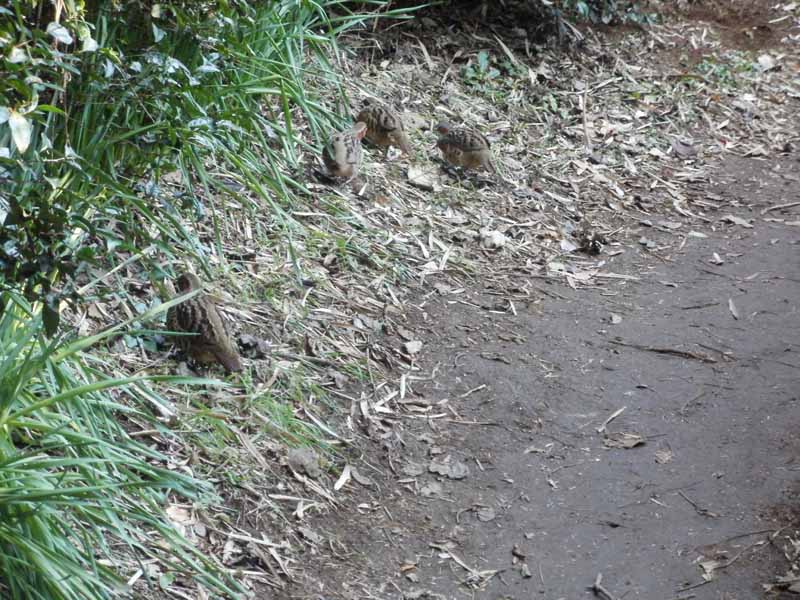
They looked like chicks of pheasant, but their parents were absent. Yes, they were present, because they are adults at this size. They did not afraid of people on a footpath in hill side.
|
|